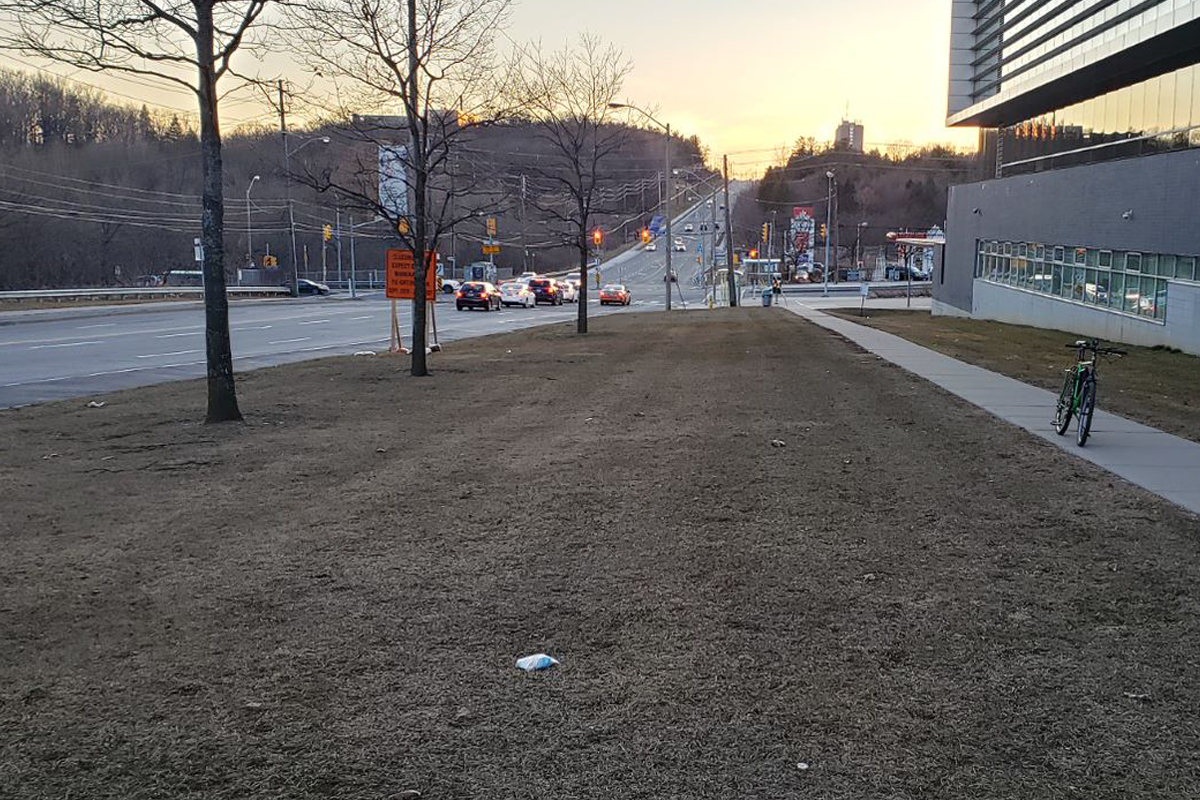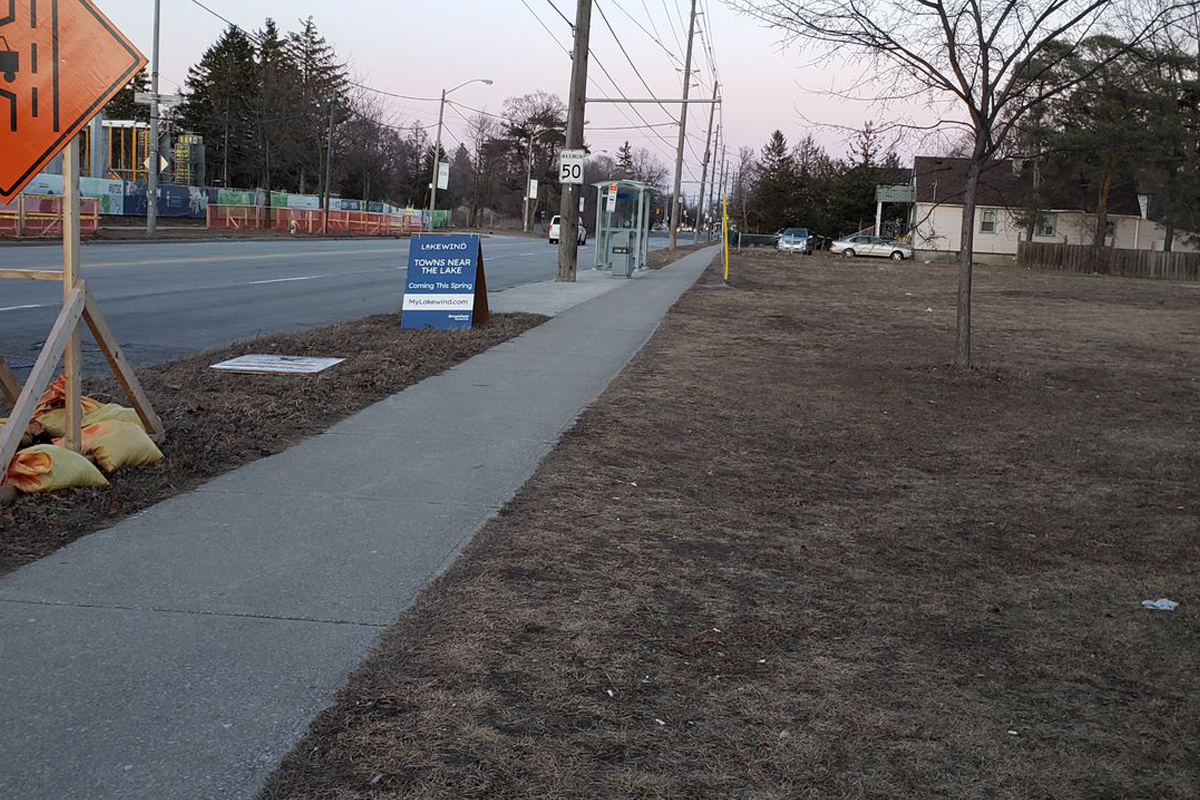
11 Nov Buses, Bikes & You: How One BRT Can Connect Communities Across The Toronto-Durham Region
Author: Nithursan Elamuhilan, Ontario Community Changemakers 2021 Cohort
With the rapid growth Toronto has seen in the past decade, the demand for travel in and around the city has also increased. A higher capacity form of transit will be needed to link places where people of all ages live, work, and play.
In fact, this is one of the only things that all levels of government explicitly agree on – passing acts/laws/initiatives aimed at decreasing short trip dependency with cars and shift support for ‘first-last mile’ trips using public and active transportation[1]. For the City of Toronto, this includes achieving TransformTO’s objective of having “75% of trips under 5 km will be walked or cycled” by 2050. While the downtown core has a well-developed grid for both transit and cycling, the same unfortunately cannot be said for the rest of the city, specifically for communities located in the east end.

Many of these neighbourhoods are growing, which the city is slowly addressing. In the Woburn-Scarborough Centre area, part of which already has designated city improvement plans, you can find condo developments proposed along major intersections with vital transit points.
CreateTO has also announced its project will dedicate 50% of units to affordable housing.[2] Morningside, a community that consists of a large amount of green space, will be home to the new connection points to the Meadoway. This project will provide a safe and car-free route over the area between residences/places of worship/businesses on one side and plazas/elementary, secondary post-secondary institutions/recreation centres on the other. A public road that already exists, Military Trail, provides a short but dangerous connection due to a lack of sidewalks and speeding. During my high school days, the principal would advise me and other students to not use that road when commuting between morning mass and classes – leaving others to use transit on other roads (a longer route and commute) or opt to have parents pick them up for the 5-7 mins drive.
In Highland Creek, this community has been subject to unique growth as it’s home to two post-secondary campuses. Having both a growing student and residential population (older property lots being redeveloped into larger homes, new residential streets built in the last 10 years, and revitalization of a historic village area) means development has to account for creating a liveable space for current and future residents while ensuring an efficient way to move all these people around.
Imagine if there was one road that provides a direct connection to all three of these communities, which includes a hospital, two post-secondary campuses, a future subway station site, as well as several public institutions located in between (a community centre, high school, and library)? Imagine building a BRT on a corridor that would include this road and help reduce 162 kilotonnes of CO2, provide up to $686 million in economic benefits, and help move the 38,400 daily commuters expected to travel here by 2041?[3]
Well, this road exists and the Bus Rapid Transit (BRT) proposal is exactly the project Metrolinx is currently planning to implement with the Durham – Scarborough Bus Rapid Transit project (DSBRT) on the Ellesmere Road/Highway 2 corridor.
The impact of this project will not only improve the reliability of existing TTC routes but also the opportunity to increase transit options for area residents – with the expansion of Durham Rapid Transit buses that would see a service expansion in Toronto. For commuters, this means spending less time waiting outside at bus shelters (key during the winter) with proposed 5 min frequent bus service during peak hours. A change like this not only can impact how people choose their travel mode, but will also bring physical changes to the area – which those opposed to the project have highlighted.
Opponents of the project have concerns about the project due to:
- Restriction to emergency vehicles, when in reality emergency services have expressed their preference for this design as fire dept. and ambulances will be able to use the BRT lanes and mount over curbs as needed.
- Concerns of tree loss, Metrolinx will actually grow the city’s tree canopy using a 3-1 tree replacement ratio (for every 1 impacted tree, 3 new trees to be planted).
- Restricted left-hand turns, curbed median design would limit current unrestricted left turns to occur only at controlled intersections
Left-hand turn restrictions have been the biggest concern, to the point where groups of homeowners have budgeted over $5000 towards initiatives protesting against the project[4] and a local developer and property owner putting up road signs at every business property calling for the cancellation of the project.[5]

Cancelling the DSBRT would in fact allow for the same issues that opponents of the DSBRT are afraid of seeing. Without reliable transit options or safe cycling infrastructure, more people will follow the status quo – choosing to drive, even for 5-10 mins trips. With more population growth, more cars on roads will lead to more road congestion. Left-hand turns will become restricted, not because of a physical barrier but due to congestion of cars idling in traffic lanes. Public transit provides the option to adjust as needed (i.e. modifying routes or bus stop locations) – this cannot be done if traffic is all from private vehicles.
If the city is serious about reaching its own goals of reducing emissions, they should support projects that bring transit and cycling infrastructure closer to businesses. Not doing so forces patrons to rely more on driving, which stunts growth due to limited parking and increasing road congestion. Supporting businesses means providing support for the long term.
It may not seem like it, but drivers, transit users, cyclists and pedestrians have a lot in common. We all dislike road congestion and want enough space to safely and efficiently travel along our public roads. With a design that works for everyone, called for by a petition I created with TTCRiders, the DSBRT can achieve this.
A connected Toronto makes for a better Toronto, it’s time to get connected with the DSBRT.
_________________________________
1.Canadian Net-Zero Emissions Accountability Act – Canada.ca, Towards a Greater Golden Horseshoe Transportation Plan: discussion paper | ontario.ca, TransformTO-Net-Zero-Strategy-and-Climate-Actions (toronto.ca)
2. Towers at Scarborough Town Centre Would Have 50% Affordable Units | UrbanToronto
3. Bus Rapid Transit to Support Your Growing Community (metrolinx.com)



